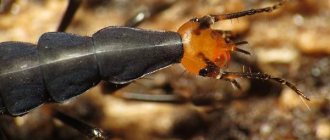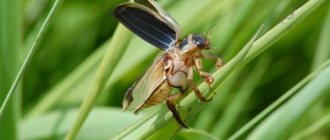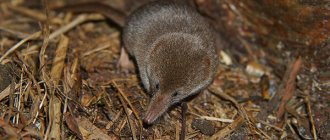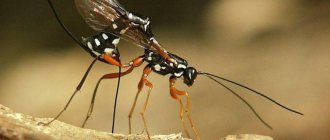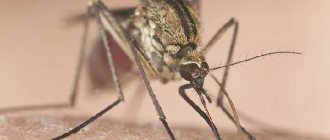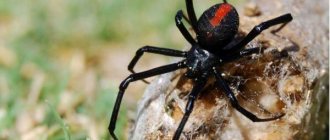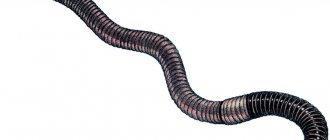Kinds
Giant nodule is one of the most interesting subspecies. The number of their legs reaches seven hundred. They look like a huge worm. Typical habitat Africa is a place where many varieties of this subspecies exist.
The diplopod's head contains small antennae, segments, and olfactory and tactile organs. The centipede itself is a single organism, protected by strong “armor”, which is quite hard to the touch (this in turn helps the insect to avoid damage). Shades – yellowish, brownish.
In nature, there are still individuals with very dark “armor” and even with an interesting “pattern” on it. African nodule has reddish, yellowish and bluish shades. This species is the largest, native to East Africa. Females are slightly smaller than males. Over the course of a year, their length increases by 0.5 decimeters. Calm, non-aggressive.
Centipedes also have other colors of “armor”, for example, olive nodule . His body shimmers with dark (a combination of green and gray) shades. The segments are clearly demarcated. Lives in southern Africa. The eggs are laid in a dung heap. In the wild they live up to 7 years, in captivity this number can increase several times. The individual is less timid than the others, and therefore emits odorous liquid less often.
Rainbow nod has an interesting name for a reason. It is characterized by grayish and black shades of the shell; there is a red line on the body. The length of the insect is up to twelve centimeters. This species often lives in Thailand and Vietnam. It feeds on fallen leaves and lives in them. When hungry it bites.
Lifestyle
surrounding the centipede includes a considerable number of diverse living organisms. It spends its entire life on the forest floor; it digs out passages in the ground. The fact that the noon has many legs is not always able to help it avoid the threat of a dangerous predator, because it is very slow.
By her character you can understand that she is a phlegmatic person. And this is a consequence of the fact that she has no dangerous opponents in nature. The only creatures that bother them are parasitic mites. To protect and scare away predators, they emit a foul odor and wrap themselves in a tight ball. His favorite pastime is to bury himself in the ground and slowly become numb.
The smell emitted by centipedes helps not only themselves, but also some other animals. As evidence, we can say about the lemur, which, when danger comes, intimidates the nook and rubs its body with its odorous secretions. This is how he manages to escape from his opponents.
Many are of the opinion that how nasty the odor of the kiwi is directly depends on its color. For example, white diplopods smell really very unpleasant. However, this does not stop people who are passionate about exotics, and they are often interested in breeding such squids at home.
However, hobbyists often keep African snakes, which are similar to ordinary snakes, except that they have numerous legs. The box or something similar where they will live should be made of plastic or glass. They are easy to care for. Keeping kissyaks has a number of disadvantages.
The main one is excessive timidity, as a result of which centipedes curl up in a tight ring and emit a nasty smell. It is recommended to use gloves before handling centipedes. After all, discharge easily stains clothes. They are very peaceful, calm, but unsociable. The price for one kivsyak reaches about six hundred rubles.
African nodule
The giant nodule is a significant representative of this species, an inhabitant of the richly diverse fauna of hot orange Africa. At first glance, it resembles a slow, huge creature, but thanks to its numerous legs (it has 700 of them!) it can disappear from sight quite quickly.
As you can see from the photo, the centipede has a round cross-section, which allows it to move quite quickly in the ground. Limbs are paired.
Endowed with an elegant color. Has numerous body segments.
The sexual dimorphism of males is expressed by the bright shine of the skin; the hard protective shell even has a slight metallic tint. The spectrum of color diversity is close to natural shades:
- olive,
- black,
- brown,
- brown.
There are bright red representatives or black ones with red legs.
You can find individuals whose cover has a bizarre pattern. The African nod seems to have surpassed its cousins as its pattern is like a kaleidoscope of color, consisting of blue, red and yellow segments.
Olive is incredibly beautiful - you can’t take your eyes off it! The color of the segments has transitional lines and demarcations; subtly flowing color schemes into each other seem to have been thought out by nature itself.
Nutrition
Kivsyaks are often called gluttons, because in one month they consume a bucket of food. Their diet consists of mushrooms, rotten shoots, bark, and so on. However, when caring for a centipede in an apartment, you don’t have to worry about its diet, because it is omnivorous. Eats both meat products and dairy products (cottage cheese). Some people feed their pets fruits, vegetables and any other plant foods.
A notable fact about diplopods is that they often eat chalk. This is due to the content of calcium and vitamins in the composition (they strengthen the shell). Chalk can be replaced with egg shells. You should not give too much food, otherwise mold will begin to form on the leftover food. Therefore, they should be removed immediately.
A favorite place for breeding is considered to be a manure heap, which is why many summer residents often find these invertebrates in the ground. If you do not take any measures to combat them, they will soon begin to gnaw on the roots, as a result of which the plants will simply stop growing normally due to lack of nutrients. It is not always possible to see such small pests, because their length is a maximum of one and a half centimeters.
As mentioned earlier, the color of the shell of centipedes depends on their variety. They are black, white, olive, yellow, brown. Their bodies have a large number of warts and sparse setae; each segment contains two pairs of legs.
Quite often, nodules end up on tubers along with manure. That is why, before buying any fertilizer, it is recommended to carefully inspect it and check for the presence of these small pests and their larvae.
To prevent unexpected “guests” from appearing on your site, the gardener should periodically clean the soil and greenhouse (remove plant debris), and also treat the soil annually using chemical and thermal methods.
What to do if there are white worms in strawberries
To protect strawberries from the voracious larvae of the cockchafer, you need to wage a comprehensive fight, including mechanical, chemical and folk methods.
The best condition for the development of white worms in strawberries is high temperature, when it rises above 25 degrees. Also, a certain soil acidity has a positive effect on the reproduction of nematodes.
The main reason why infection most often occurs is the use of seedlings that were initially infected. For quite a long time, sometimes up to several years, pest eggs can remain in standby mode, and under good conditions they can become active very quickly.
Chemicals
The use of pesticides is justified when the strawberries on the plot are eaten en masse by larvae, and the use of other control methods has not brought a positive outcome.
When planting seedlings, strawberry roots are dipped into the “poison” for a few minutes or poured into the holes. Plants are watered from above with chemicals only after harvesting or in early spring.
It is recommended to use the following drugs:
- Antikhrushch. Affects the nervous system of the Khrushchev. In the evening, water the soil generously with plain water; in the morning, apply a solution in a concentration of 5 ml over the damp soil. drug for 10 l. water. 100-150 ml is spent on each bush. solution. Treatments are carried out no later than 1 month before harvest, most often in mid-early April.
- Some of the most effective drugs for Khrushchev are Pirinex or Marshall. But their decomposition time is 2-3 months, so treatment must be carried out before planting or immediately after fruiting.
- The drug Confidor according to the instructions.
- Karbofos. Paralyzes the digestive system of insects. Dig narrow grooves along the strawberry ribbons. Water with water adding 75% aqueous solution.
- A drug based on a fungus - Metarizin. It is effective no earlier than a month after application; it is most effective when applied in September. Until spring, the fungus multiplies and destroys the larvae.
- Aktara is a contact-intestinal poison. It is absorbed by the vascular system of the plant, so all its parts become poisonous. It is precisely because of the crustacean that Aktar cannot be called the best option - it decomposes quickly and the drug lasts no more than 1-1.5 months. Concentration to combat chafer larvae: 6 g per bucket of water.
The biological product Nemabact is safe for the environment. These are microscopic organisms infected with a symbiotic bacterium. When processing beds with strawberries, they settle in the body of the beetle and eat it. There are many positive reviews about the use of the drug from Medvedka.
When traditional methods have not brought the desired result, and the small worms on the strawberries have not disappeared, chemical preparations are used. Among these drugs are the following:
- Heterofos is used in the form of a solution, which is prepared at the rate of 15 g of the drug per 10 liters of water. Strawberries are processed at an air temperature of 20 degrees Celsius. Also, bushes are often soaked in this solution before planting;
- The drug Phosfamtide is used in a solution corresponding to 0.02%, and the treatment of plants is repeated every week;
- Mercaptophos and Ruskamin are used according to the same scheme.
This drug is very toxic, it is necessary to handle it using protective equipment: special clothing, gloves, and most importantly, wear a respirator.
Folk remedies
Proven folk remedies include:
- Before planting strawberries, sow alkaloid lupine as green manure. The plant will also serve as fertilizer, and the larvae will die after eating the lupine pods. Alkaloid lupine has also proven itself to be effective in suppressing nematodes, so it is very good to plant it in front of garden strawberries.
- For 10 liters of water 2 tbsp. spoons of mustard. Water under the bush.
- 10 drops of iodine per 10 liters. water. Apply at the root.
- A solution of ammonia helps get rid of pests at any stage of growth. The composition of the soil in which ammonia is added will not please the beetle. For 10 l. add 20 ml of water. ammonia and water the rows, as well as the bushes. This can be done no more than twice a month.
- Clover is planted between the strawberries and along the perimeter of the bed. It saturates the soil with ammonia and drives away the larvae of the cockchafer.
- The infusion of crushed heads of garlic or its arrows is poured with water for 2-3 days. Usually 2-3 waterings are enough for the beetles to leave the garden bed.
- do not fight mole crickets. Mole crickets do not cause any significant harm to strawberries, but they eat mole crickets well.
In order to “suppress the appetite” of the cockchafer larvae, it is recommended to add mustard powder to the water for irrigation during the season and make decoctions of wormwood and calendula.
When choosing methods to combat strawberry nematodes, it is better to first focus on more gentle methods, which include traditional methods. With their help, you can achieve a very serious reduction in the number of pests, down to a safe number.
How to deal with worms in strawberries:
- The simple hot water treatment method, which is used by many gardeners, has good effectiveness. For this procedure, you need to dig up the affected bushes and wash their roots with tap water. After this, they are placed in hot water, with a temperature of 45 to 55 degrees. The roots should remain in such a bath for 10-20 minutes. This time depends on how much the pest damaged the plant. You should pay special attention to the temperature of the water, because if you make it hotter, the plant will subsequently die;
- Calendula tincture helps get rid of pests well. It is prepared at the rate of 5 tablespoons per volume of water equal to 5 liters. Once a week, strawberry bushes are watered with this infusion for a long period of time;
- You can also infuse marigolds for this purpose, which are poisonous to the pest. On the one hand, parasites really like the smell of marigolds, and it attracts them, and on the other, the juices of the plant kill the pest. 5 kg of the plant is mixed with an equal amount of water and infused for 2 days. It is necessary to filter the resulting infusion and water the diseased strawberry bushes;
- Another plant that is insisted on is hogweed. It is prepared according to the same scheme, pouring 0.5 kg of raw materials with the same 5 liters of water. The infusion is prepared for a day, after which it must undergo filtration. Then they water the bushes with it;
- Farmers often prefer to get rid of nematodes using the drug Dekaris. These are tablets that can be purchased at a pharmacy. Take one tablet and dissolve in 1 liter of water. Watering strawberries with this product is done about 4 times;
- An infusion of onion, preferably a batun, is prepared using 200 g of raw material per 5 liters of water. Water the strawberries with this liquid once every week.
An effective method, according to experienced summer residents, is to plant plants such as mustard and green radish next to the strawberry beds.
Feedings and stimulants
To begin treatment, the bushes must be examined every week in the spring, at the same time they are fertilized. These fertilizers should be organic and contain potassium. You can use ash.
During the growing season, it is necessary to apply growth stimulants several times, which will strengthen the immunity of strawberries. Affected bushes found are dug out of the soil and treated with hot water.
After the crop has already been harvested, it is time to use chemicals. In the fall, fertilizers containing potassium and phosphorus are applied.
Reproduction and lifespan
In nature, the female usually lays up to 70 eggs in the ground (right where she lives). The larvae of this species practically do not differ in appearance from their parents, except that they have smaller legs. When cold weather sets in, they and adults prefer to burrow deep into the soil with optimal moisture. And this is how they survive the winter.
To distinguish centipedes by gender, it should be remembered that males have homopods (similar to additional limbs), which are located inside the head segment (its inner part). This information is especially important for those who intend to raise invertebrates at home.
In order for the female to accurately lay eggs, it is necessary to provide all the necessary conditions for this - a variety of food, optimal humidity, proper care. If you follow all the steps correctly, the centipede will live for at least ten years.
Benefits and harms
Noiseweeds cause obvious harm when they live on gardeners’ plots. They damage the roots, thereby preventing the seedlings from developing normally. Sometimes small pests get into flower pots. To get rid of them, you need to put the pot in water for a couple of hours, wait until all the centipedes come out, and collect.
You can’t grow a compost heap in pots, it’s useless. For feeding, it is better to use complex fertilizer. Humus is often used against garden weeds. It is also worth mentioning the benefits that kiwis in the country can bring. They are able to “recycle” compost waste and turn it into nutritious soil.
If there is a strong disgust from such a neighborhood, a person can use some chemicals, such as “Karate”, “Aktofit” and others. But for a more effective result, it is best to add chloride salts.
Multi-legged pest in the garden
For gardeners, nooks in the country become a real disaster. They chew roots, weakening plants, and spoil berries and root crops. Usually a spotted or speckled noose lives in the garden. The centipede's body is white or beige, with red or orange spots on each segment. They mark the holes through which the protective secretion comes out. This species has a long, thin body and no eyes. The role of sensory organs is performed by the antennae. Females are longer and thicker than males, their body is 12-15 mm, and in males - 8-12 mm. Millipedes prefer to feed in the dark. The rest of the time they hide in shelters, and at high temperatures they burrow into the ground. On a cloudy, stormy day, the pest can be seen on the surface.
Attention. Due to their secretive existence, garden owners do not immediately realize the true culprit of plant damage.
Centipedes try to stay close to food sources; if there is a dung pile on the site, you will find them there. Their lifespan is 4-5 years, so development from larvae to adult is slow. The process takes 3 years. Females lay eggs near the feeding areas of the larvae - near strawberries and cucumbers. The offspring emerges in 2-4 weeks depending on weather conditions. The larvae will have to molt several times. Pests overwinter in the soil; adults and larvae enter diapause.
How to get rid of nodule?
The appearance of these centipedes in large numbers will not bring any benefit in the form of processing rotting organic matter for the garden. Also, together with worms, they form fertile humus, but again only in small groups.
The massive proliferation of these pests means that gnawed beets, raspberry and tomato bushes, potatoes and other agricultural crops will soon appear on the site. In order to avoid such encounters and keep your harvest intact, you need to understand how to get rid of nodule.
This is interesting! When diplopods begin to move, the forelimbs are activated first, and then everything else. You can notice a kind of wave.
Large individuals are usually not found in the areas. In most cases, they live in Africa, America or Asia (tropical latitudes). In Russia, you can rarely see giant centipedes, but medium ones are very common.
Over the course of a year, these creatures are able to process a lot of plant residues that have already begun to rot, turning them into nutritious soil (for this you need to dig a compost pit).
The most common type of centipedes in the middle zone is gray-steel (reaches more than thirty millimeters in length). In second place is the sandy one (the shell is black with two longitudinal stripes of orange color).
Mating of two individuals occurs only at temperatures above +25, and there must also be high humidity. Nest building materials are excrement and pieces of soil. The small larvae look like smaller versions of the adults, but with a difference in the number of legs. The growth process is accompanied by periodic molting, which contributes to the appearance of additional pairs of legs.
Is it worth fighting against the nod?
By nature, kiwis are vegetarians, but if a person keeps them at home, then you can feed them anything, without going to extremes, of course. Invertebrates climb from the site into the house if there is high humidity outside, which provokes accelerated reproduction of individuals. Houses are usually settled in the kitchen or bathroom, since water is present there. They scare you with their appearance when they crawl on the ceiling.
They are active at night, because during the day the sun negatively affects the shells, drying them out. They do not carry infections or diseases, and do not bite people or domestic animals. They are very shy, and in case of any danger they turn into a dense circle and emit foul odors to protect the abdomen. There is no danger to people, except that they may stain their clothes or hands.
Few people can be happy about the appearance of centipedes in the house, especially impressionable owners. In such cases, many wonder how to eliminate them. Insecticides are not very effective against pests, so the best solution is to use special traps. They should be laid out in the evening. To attract nooks, any damp rag or pieces of potato are placed there. For greater effect, you can use “Pochin” (food bait-insecticide).
Sometimes pests settle in pots with indoor plants, and thereby greatly upset the owners. Noises appear there because organic matter is necessarily present in any pot. This can happen if you use untreated soil from the site.
Important! Before adding garden soil to a pot for indoor plants, it is recommended to pour boiling water over it.
If you regularly pour tea leaves into pots, this will only speed up the process of pest reproduction. This is also facilitated by fallen buds and leaves that were not removed on time. After the moths eat all the rotten stuff, they switch to flowers.
If the plant is small in size, then it should be carefully dug up and the pot with soil should be placed in water for a while. If it is impossible to use this method, it is better to use one of the popular insecticides - “Karate Zeon” or “Aktofit”.
Kivsyak - pet
Now that we have become acquainted with the nodule as such, we can tell you that there are species of much more impressive size than those found in our fauna - huge, reaching a length of 30 centimeters or more. They live primarily in Africa, but are very popular pets all over the world.
The most common of them is the giant or African nodule (Archispirostreptus gigas). The animal reaches 27–30 cm in length and 3–3.5 cm in diameter. The body is black, the limbs are red or ginger. An orange or brick stripe is visible between the segments. The lifespan of such a pet is about 7, and with good care, up to 10 years. It is found naturally in East Africa.
One of the most beautiful is considered to be the rainbow nodule ( Aulacobolus rubropunctatus
), a native of Southeast Asia. The peculiarity of this species is that its covers, when exposed to the sun, shimmer in different colors. However, even in the shade the animal is quite attractive - its bluish-gray body is divided into segments with dark brown stripes, its back is highlighted with a bright red line. At the same time, the rainbow nodule does not differ in its large size, reaching a length of only 9-13 cm.
The most striking of the ones kept at home is the Madagascar grasshopper (Aphistogoniulus corallipes). Its body length reaches 10–12 cm. The color varies in different shades of red. Black rings on the segments make it expressively striped. But he only lives for 5 years.
The olive grasshopper (Telodeinopus aoutii) has an interesting color, although not so catchy The name itself speaks about the color of its covers. However, the shades of this animal can vary, ranging from yellowish to brownish. The body length of the olive nodule reaches 24 cm. The segments have brown rings, which makes it striped. It originates from South Africa.
To keep the nodule, a small terrarium is enough - twice the length of the animal. © TheRoboBA
